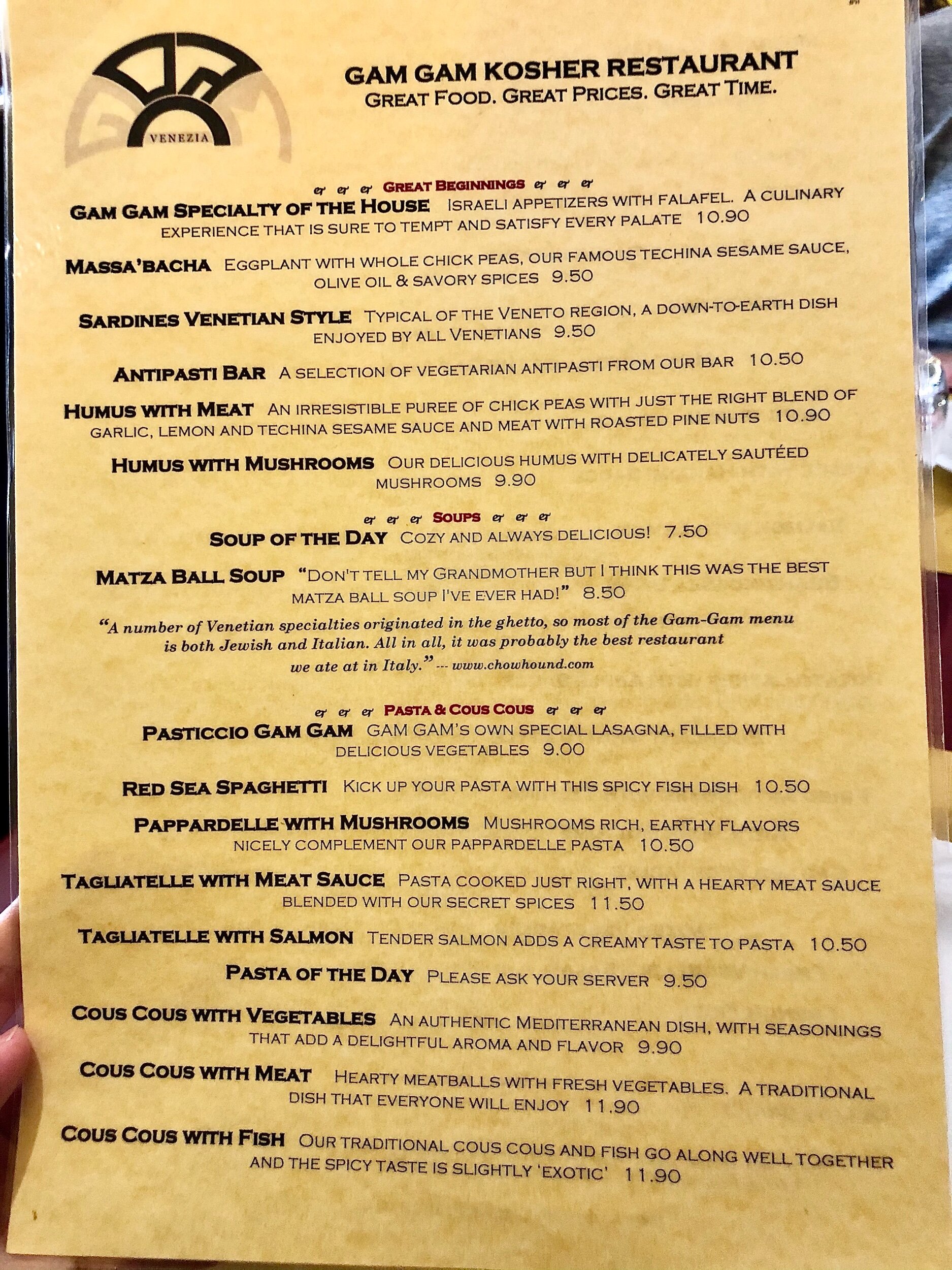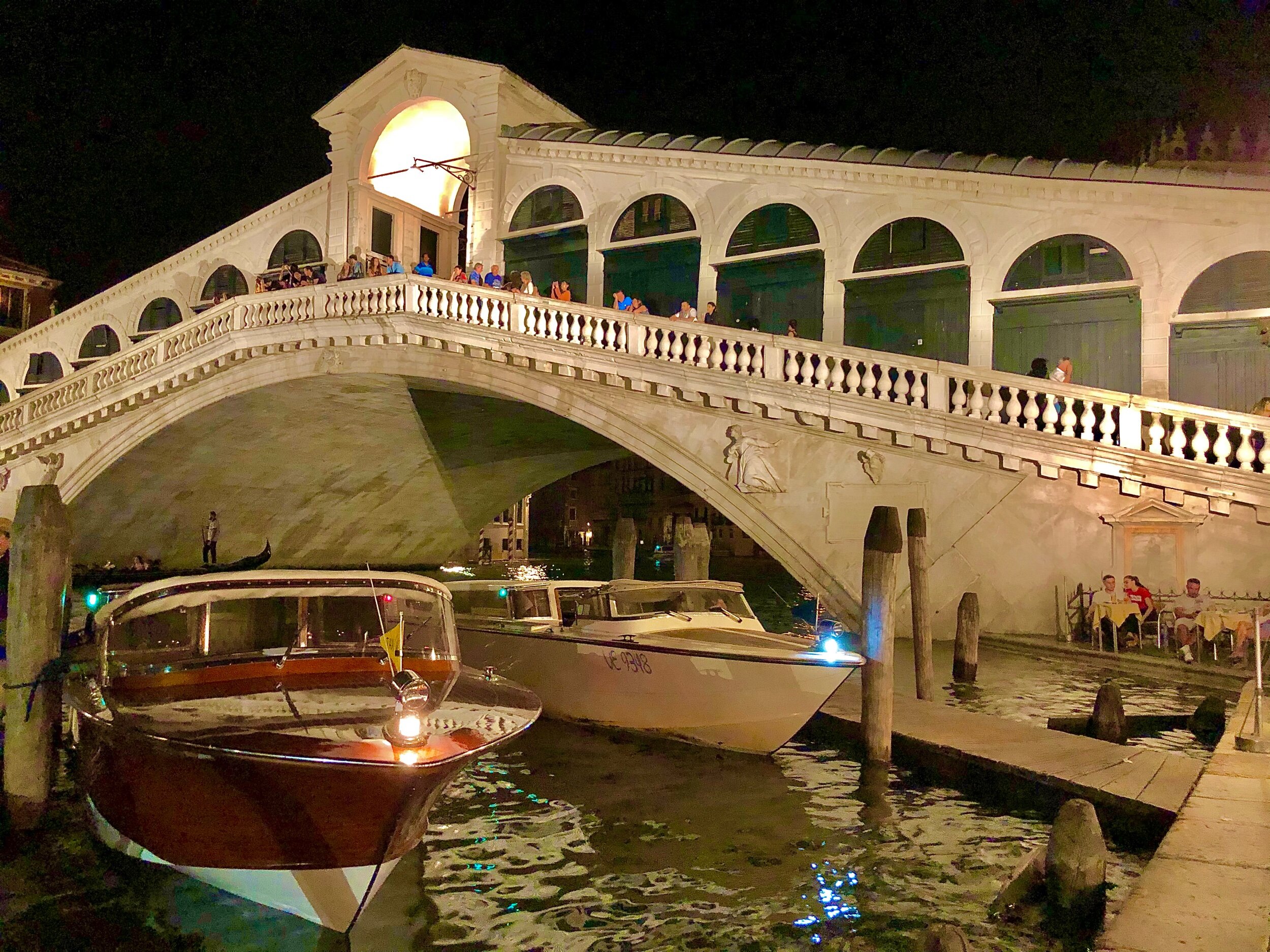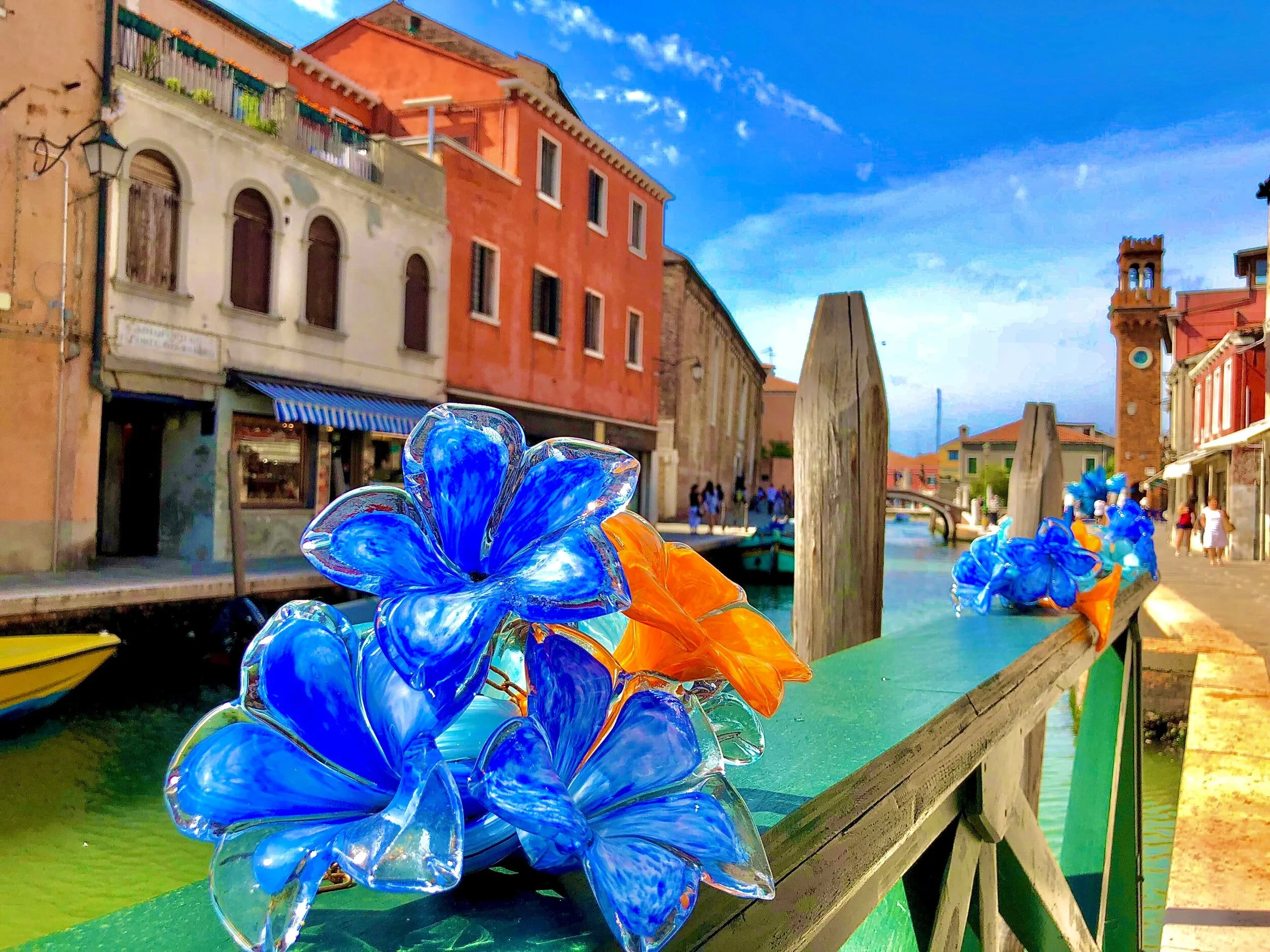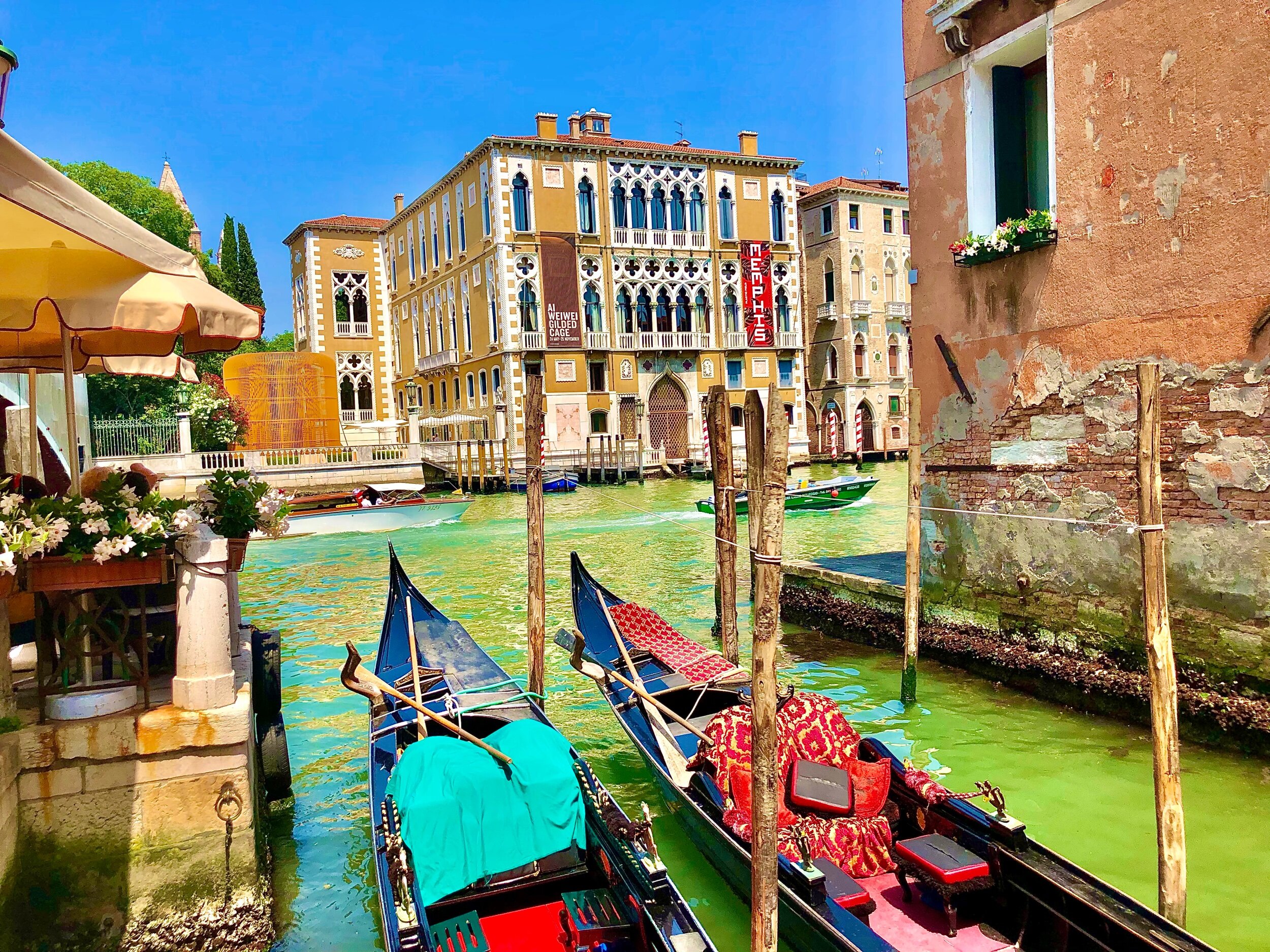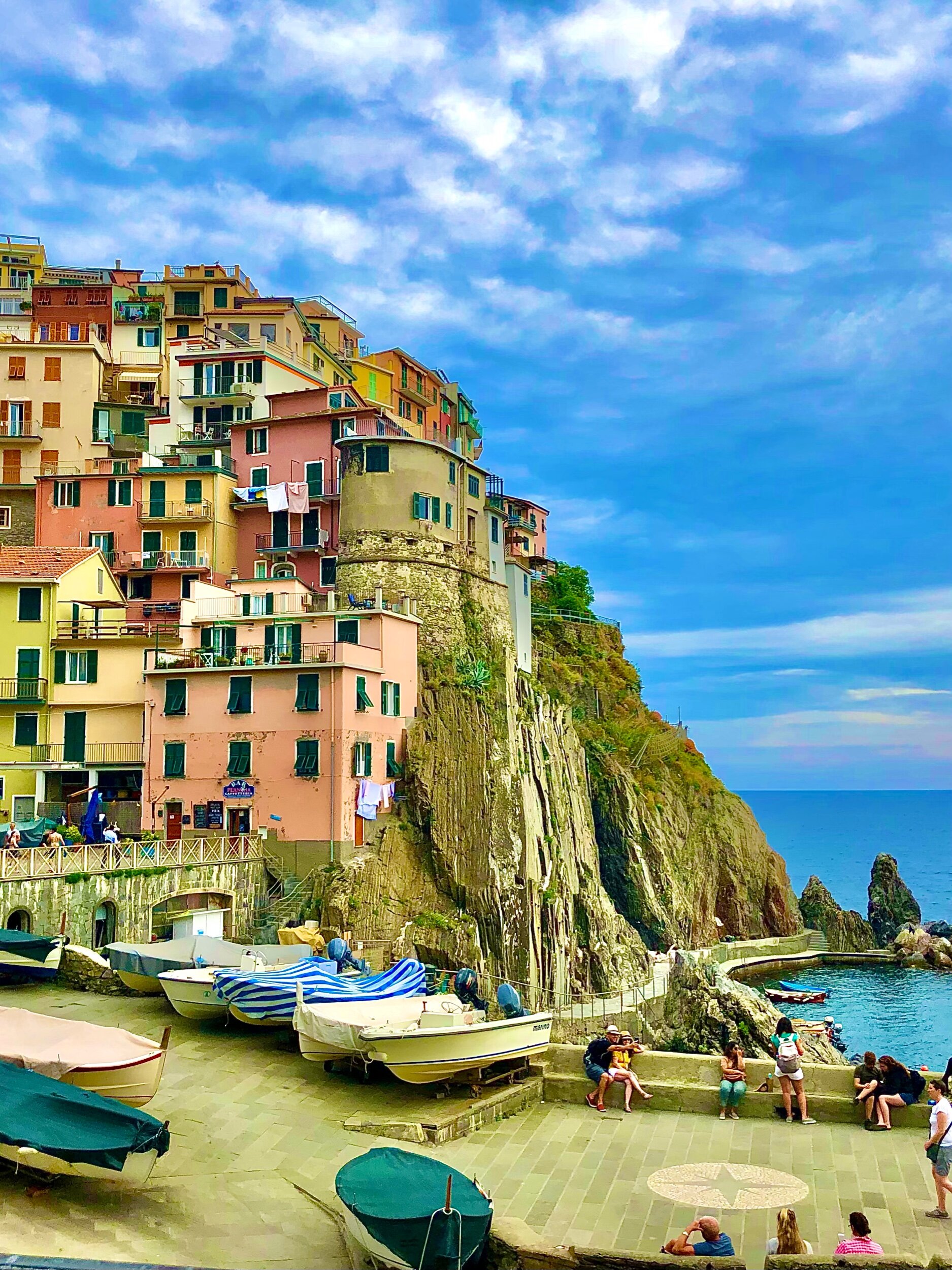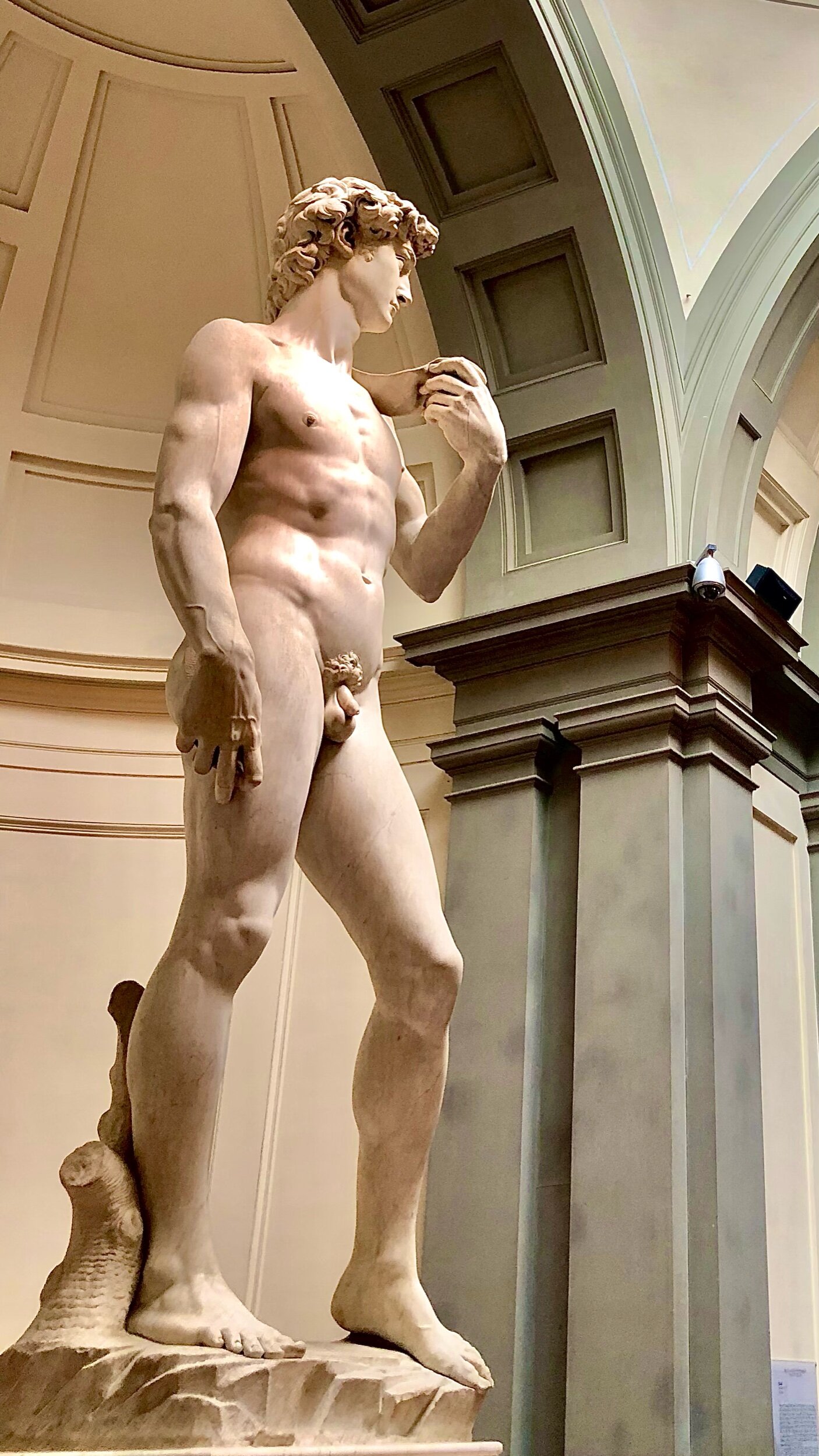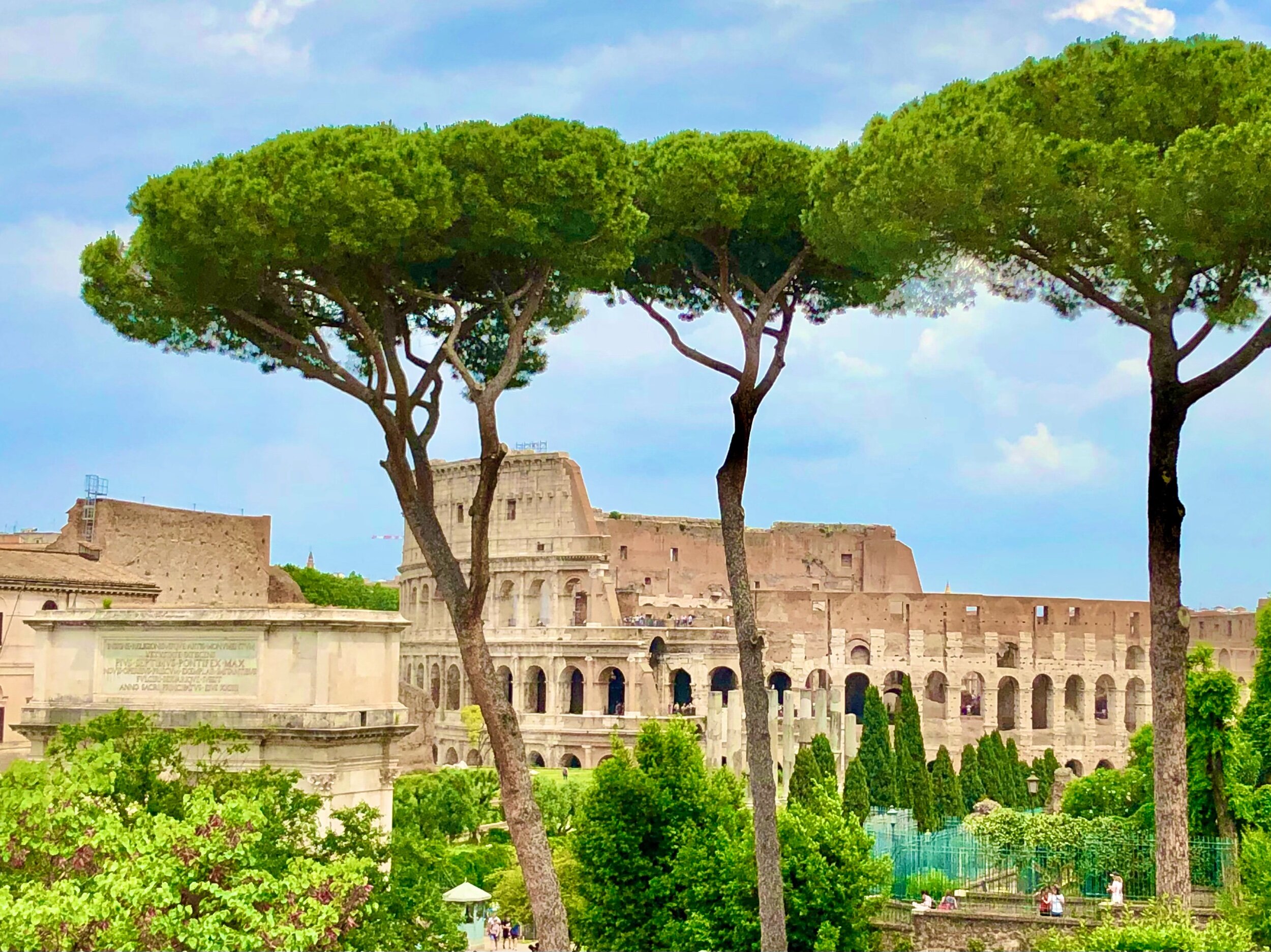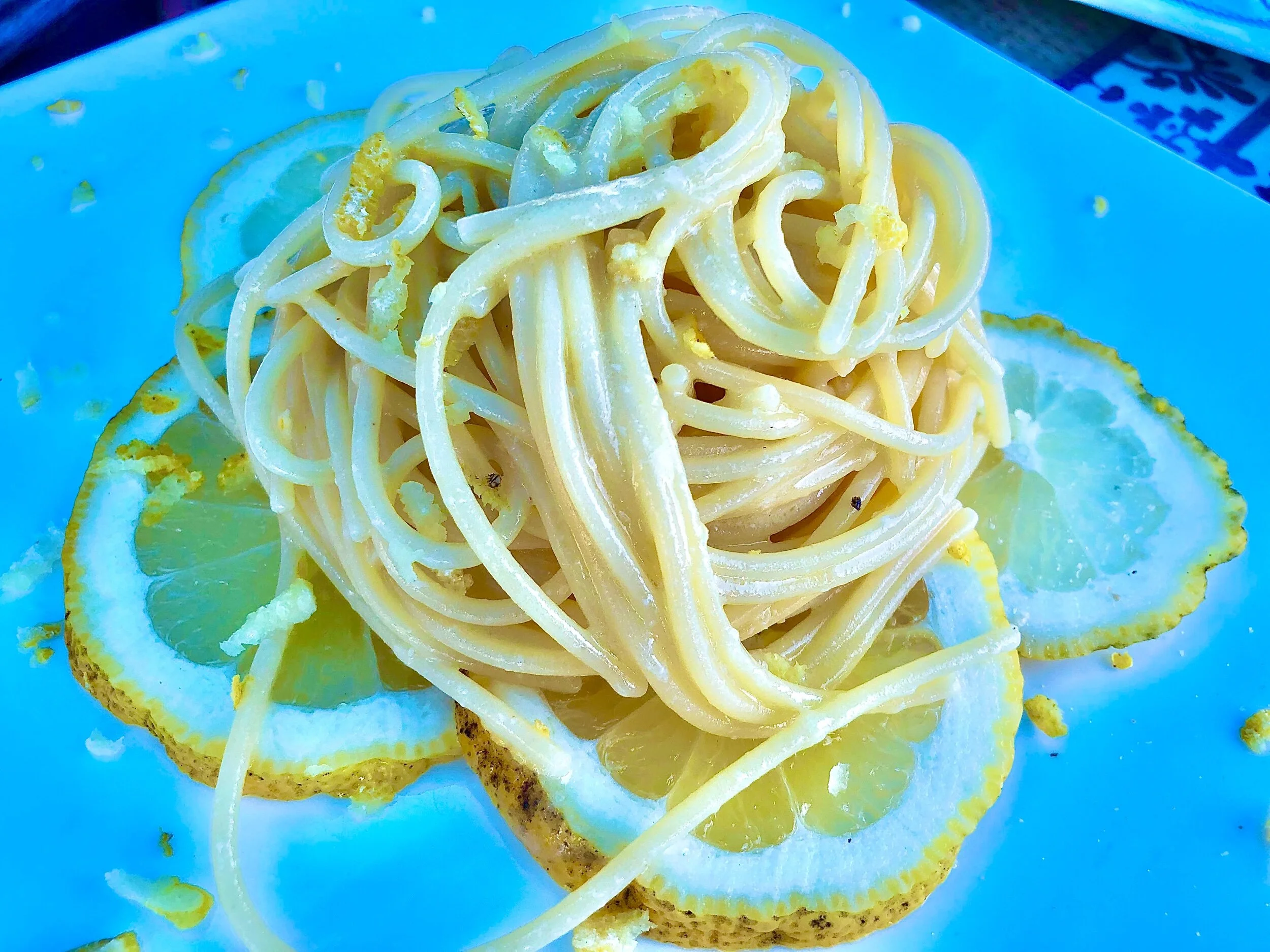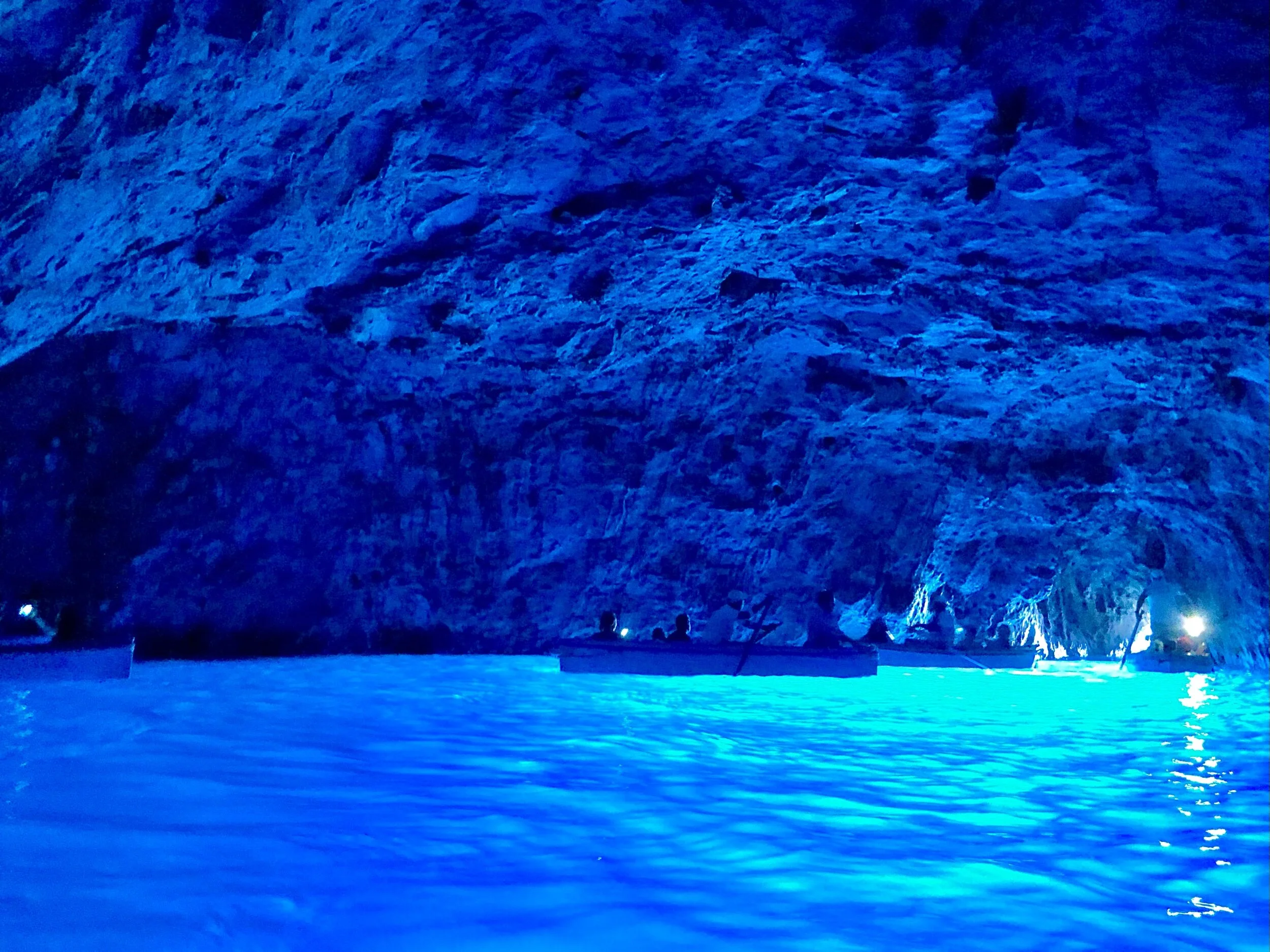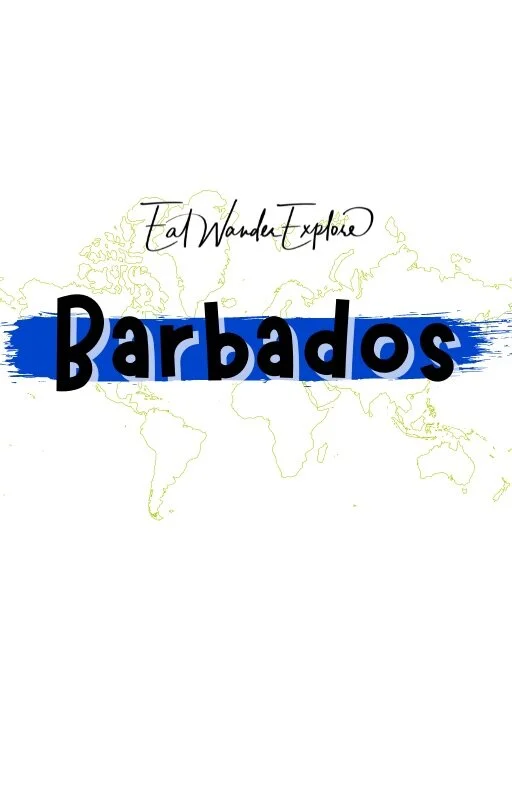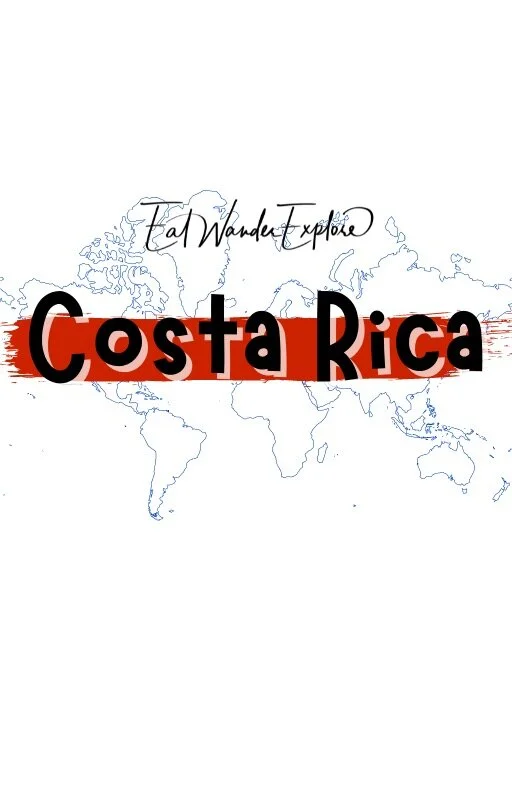The Romantic Floating City of Venice - Italy
Please note: This post may contain affiliate links. See our disclosure to learn more.
Destinations > Europe > Italy > The Romantic Floating City of Venice
Other Italian Articles: How to Save Money while Traveling in Italy - Rome - Florence & Pisa - Cinque Terre - Amalfi Coast and Capri - Naples - Pompeii
The Floating City - Venice
One of the most romantic destinations on earth, Venice is a city of many names and many faces. More than 400 bridges cross over 177 canals and link the 118 islands that make up this capital city of the Veneto region of Italy. The city’s long history as a center of military, commercial, and artistic power means that the list of things to see in Venice can quickly grow out of control - especially with the large variety of unique foods that came from that rich history!
Though the modern city has grown well beyond its original island home, the Venetian Lagoon and part of the city have been designated a UNESCO World Heritage Site. When you visit The Floating City, there is history and culture around every corner. There is also a lot of walking involved in Venice, since the city is Europe’s largest car-free area. Don’t worry though, there are boats if your feet get too tired!
Before you go, we recommend learning more about Italy’s culture to know what to expect and to get the most out of your experience. If you have children, consider following the itinerary of this “Venice for families with children” tour to keep your kids interested.
Here are some of the best highlights of what to do in Venice to get you started:
Basilica di Santa Maria della Salute
When it comes to Venice attractions, the Basilica di Santa Maria della Salute, or Our Lady of Good Health, is an important one historically and culturally. Built in thankful response to the ending of the plague in 1631, the church demonstrates the diversity of the city. Though it’s a Catholic church, it draws on the best of the art and artistry of the various peoples who lived there, including Greco-Roman style and Jewish design elements in the impressive architecture.
The high white dome and bright walls provide a clean background for the featured artworks that were chosen to decorate the space. The artwork of Titian and Tintoretto are amongst these must-see features.
Admission is free to the church itself, but much of the artwork is located in the sacristy and that does have a fee to visit. One way to see it is with a kid-friendly guided tour that includes the Venice Accademia Galleries.
Punta della Dogana
Next door to the basilica is another aspect of The City of Water’s history, the Punta della Dogana. Housed in the old sea customs building, or Dogana da Mar, a triangular building located at the point where the Grand and Giudecca Canals come together, the modern art museum was restored in 2008 in a minimalist and industrial style that caused some controversy.
It houses the Pinault Collection, one of the largest selections of contemporary art in the world.
St. Mark’s Square - Piazza San Marco
The cultural center and hub of public life in Venice is St. Mark's Square, known as “Piazza San Marco” in Italian. The square is lined with historic sites, restaurants, and shops. It’s the largest square in the city, so the smaller ones are referred to as campo (field) rather than piazzas.
The Piazza is one of the busiest sites in the city, a meeting place for tourists and locals alike. If you’re taking a Venice tour, it’s likely that it will start or end here. Lots of people makes for great people-watching, but it also means that the shops and restaurants are more expensive, too.
One of the best ways to explore the highlights around St. Mark’s Square, including
Saint Mark’s Basilica,
Doge’s Palace,
the Bridge of Sighs, and
the old Prison of Venice,
is with the “Secret’s” tour or the Doge's Palace tour. Learn more about a few of these highlights below.
Photo by Simone Mascellari 🇮🇹 on Unsplash
St Mark’s Campanile
One of the best views in the city is from the top of St Mark's Campanile, or bell tower. Built on the foundations of a Roman watch tower, the campanile has served as a beacon to the sea since 1173, though it has been renovated several times. The historic tower was rebuilt in the style of the 15th century renovations after it collapsed in a 1906 storm.
You don’t have to climb the stairs like Galileo did in order to take in the incredible views of the Venetian Lagoon, as modern access is by lift only. During the busy season there is a skip the line option if you book your tickets ahead online. In the off-season there are fewer crowds so that option is not available, but a stop here is included on the Doge’s Palace tour.
Saint Mark’s Basilica
Saint Mark's Basilica itself overlooks the square on the Eastern side. The church is one of the best examples of Italo-Byzantine architecture. A symbol of Venice’s power and reach through the ages, the church is a truly cosmopolitan creation displaying the work and influence of artisans throughout the world.
The church, dedicated to the city’s patron saint Mark the Evangelist, has grown from a chapel attached to the Doge’s Palace simply designed to house the remains of the saint in 828. After a fire in the late 900s, the church was rebuilt and much was added on to reflect the wealth and status of the city. The golden mosaics and gilded altars have led to it being called Chiesa d’Oro, or Church of Gold.
To get all the details of the various masterpieces, and skip the often very long lines, it’s a good idea to book a St. Mark’s Basilica tour. There are several guided options, and tours are usually combined with other attractions in the area.
Doge’s Palace
The original Doge's Palace was also lost in that 10th century fire, and a new, more fortified structure was built in its place. To accommodate continued commercial and political expansions, Doge’s palace was added to and renovated throughout the 13 and 1400s. Each addition added the style of the time to the existing building.
Renovations following several fires in the 1500s brought a renaissance flavor to the palace while maintaining its Gothic style architecture. In the late 19th century the remaining administrative offices were relocated so the building could be restored and in 1923 the Italian government returned the building to the city of Venice to be a museum.
Tickets for the museum are best purchased in advance, since even in the off-season Venice is still a popular destination. Some options are to get a skip-the-line tour or a Venice Museum Pass - that gives you access to 11 museums throughout the city - and another option is a pass for the Saint Mark Square Museums which also includes the Correr Museum, the Marciana Library, and the Archaeological Museum.
Jewish Ghetto
Established in 1516, the Jewish Ghetto in Venice is what gives us the English word ghetto today. It was a separated area of the city where Jewish people were required to live, connected to the rest of the city by two bridges that were only open during the day.
The segregation of Jews continued until the end of the Venetian Republic in 1797. The area is still fascinating today and a Venice ghetto tour will add another layer to your visit.
Gondola Ride
An iconic image of Venice is floating through the canals on a Gondola Ride. While these flat-bottom boats were a mainstay of transportation in the past, these days they are mostly just for tourists. It can be a bit pricy – the official price is 80 Euros for a 40-minute ride – but it’s worth the price to experience the city from the water. Make sure you get a clear confirmation from your gondolier before getting in the boat of the price and the length of time, since they see the official rates as open to negotiation - another reason why it helps to read the short customs and culture guide before you arrive!
You can also get a shared gondola ride for about half the price, like we did, but you may need to switch seats to get your iconic photos.
A gondola tour is the only way to see many historical sites and architectural wonders that are only visible from the smaller canals. When you’re in a gondola on a small canal, the millions of tourists who visit the city can’t block your view. Thus, a Venice gondola tour will give you a spectacular, up-close view of the city. If it’s a bit too expensive, do grab one of the many shared gondolas - but make sure you show up early enough to know exactly where your specific gondola is waiting, as they will leave without you!
Trattoria Antico Calice
Trattoria Antico Calice is a lagoon restaurant that traces its history back to the end of the 16th century. Started by the Bolla brothers who came from Verona and brought with them the region’s wine and food traditions, today customers can enjoy Venetian wines and local specialties.
Frequently recommended by locals, and a favorite lunch spot of gondoliers, this is one of the best places to eat in Venice!
If you really want to explore the unique foods of Venice, this is one of the main places to stop for a meal. However, you can also find a number of amazing food tours - day, night, or specialty - to completely delight your senses!
Rialto Bridge & Carnival
A visit to the nearby Rialto Bridge can help you walk off that delicious seafood lunch. Spanning the Grand Canal, the bridge is named for the Rialto market on the eastern bank. The present bridge was built of stone in 1588, after several collapses of the previous pontoon and wooden versions. The iconic architectural feat is one of the biggest attractions in Venice, so it’s often crowded, but the view of the Grand Canal is spectacular.
If you’re interested in the Carnival and Masquerade lure of Venice, some walking tours explore the Rialto Bridge area in more depth, and also stop at one of the major Opera theatres as well as a few of the extraordinary examples of Venetian architecture in the area: buildings blended with the gothic art and renaissance styles.
Alternatively, if you’re in Venice during Carnival season, you can get a Venice Carnival Walking Theater Show - an amazing experience that is totally worth the price! If not, try the Carnival Treasure Hunt instead.
Grand Canal Venice
The Grand Canal is one of the major waterways in Venice with the lagoon and train station at one end and the San Marco basin at the other. It flows in the shape of an “S” though the central districts of the city. A Grand Canal boat tour is not to be missed – the view from the water is truly amazing!
Since this is a main thoroughfare of the city, it’s busy all the time, but it’s a good idea to avoid going during rush hours if you want to see more. You can also see some of the secret canals with a semi-private tour instead.
Venetian Islands
If you want to get away from the crowds, the thing to do is to explore some of the smaller Venetian Islands throughout the lagoon. While some of these islands may be lesser-known, they do not disappoint when it comes to history and culture.
A basic affordable tour of the main islands: Murano, Burano, and Torcello is recommended - but, if you want more time on each of the islands it may be helpful to do individual tours.
Burano Island - Venice
The dreamy island of Burano is a treat for the eyes. Actually a group of four islands, Burano is the home of handmade Venetian lace. After checking out the Lace Museum to get a sense of the history and scope of the traditional craft, you can experience Venice in miniature.
Next, check out the brightly painted houses forming a rainbow along the canals, the lovely vista, and then stop off for seafood or pasta at the renowned Trattoria al Gatto Nero to round out your visit to this picture-perfect village.
Get a detailed Burano specific tour of the highlights of Burano, or find your way to Burano on your own. The Burano Ferry runs every 20 to 30 minutes during the day and takes about 45 minutes to reach the island.
Murano Island - Venice
Another must-see Venetian island is Murano. Famous for its artisanal glassmaking, which was moved out of the city to the island in 1291 to avoid fires from the glass furnaces. Today you can visit the studios and workshops of master artisans and see them make the fabulous glass art. A visit to the Glass Museum will give you a deeper view of the island’s history of glassmaking.
While a boat trip to Murano with tour is extremely affordable, you could also visit Murano by yourself. The Murano Ferry takes just 17 minutes from the train station. It’s also easy to reach the island by waterbus or a faster but more expensive water taxi.
Must See Places
There are so many reasons to fall in love with Venice. Whether you have a few days or a longer span, taking in the treasures of culture and history will show clearly that Venice truly is one of the most beautiful cities in the world.
However, if you only have a single day to explore Venice, the absolute must see spots are:
The highlights of St. Marks Square,
The smaller Venetian islands, and
A Grand Canal gondola ride.
Although, if one of those doesn't interest you as much, we'd recommend trying one of the amazing food tours or the Venice Carnival Walking Theater Show.
Either way, you're going to have an unforgettable experience in Venice that you'll remember forever!
*Don't forget to come back to this article and let us know how your trip turned out in the comments section below!
FAQ’s
How do residents manage their daily commute given the city's aquatic layout?
In Venice, the primary mode of transportation is by water. Locals use various types of boats, including vaporetti (water buses), which serve as the main public transport system, traversing the Grand Canal and other major waterways.
What is the impact of tourism on the Venice’s infrastructure and environment?
Venice faces challenges due to the high volume of visitors, which can lead to overcrowding and strain on its resources. The city has implemented measures to manage tourist numbers and preserve its historic sites and delicate ecosystem.
Is the maintenance of the buildings in Venice a complex task due to constant exposure to water and the risk of flooding?
The city employs various conservation techniques to protect its architectural heritage. This includes the MOSE project, a system of mobile gates designed to separate the Venetian Lagoon from the Adriatic Sea during high tides to prevent flooding.
(1) The Romantic Floating City of Venice - REmotiFIRE by EatWanderExplore. https://eatwanderexplore.com/blog/the-romantic-floating-city-of-venice.
(2) Free Travel Guide for Italy - REmotiFIRE by EatWanderExplore. https://eatwanderexplore.com/guides/italy.
(3) 3 Days in Rome Itinerary - The Best Sights in Italy’s Eternal City. https://eatwanderexplore.com/blog/3-days-in-rome-itinerary-italy.
(4) REmotiFIRE by EatWanderExplore Remote Lifestyle & Online Coding Bootcamp. https://eatwanderexplore.com/.
Thank you VERY much for reading our article. We actually created this website to help people reach financial independence. Did you know that by having a remote job and traveling endlessly, or living in a country that has low costs of living, you can actually reach retirement quicker? Plus, retirement abroad is up to 75 percent cheaper as well! Learn more by exploring our website: EatWanderExplore and REmotiFIRE.
See our Thank You page to sign up for our free weekly newsletter - you’ll receive only 1 email per week letting you know about our latest travel articles, remote-work life, and amazingly affordable destinations!
Found this post useful? Buy us a coffee to help support this site’s running costs OR share this article with a friend.












